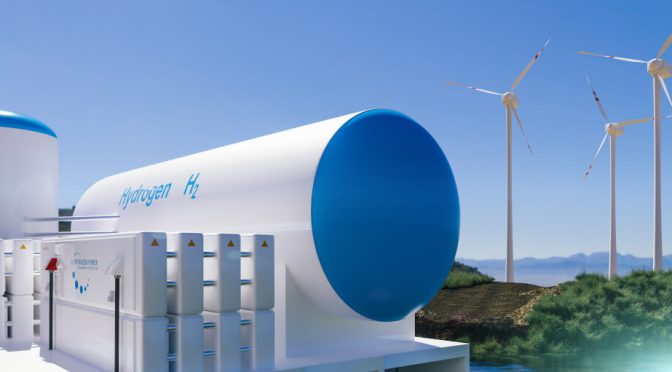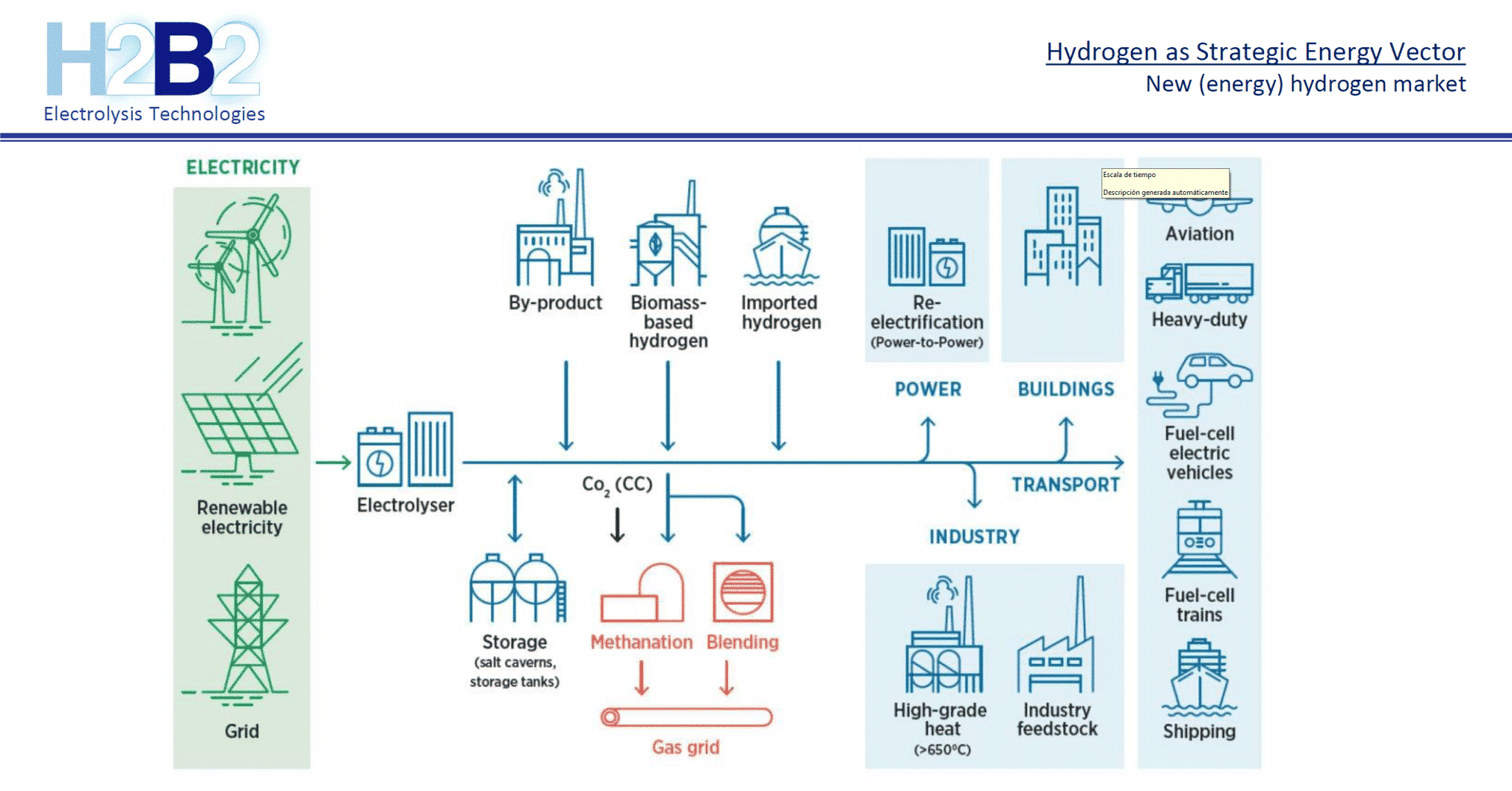Green hydrogen production projects are flexible enough to adapt to all the challenges of the energy transition. From taking advantage of the surpluses of a wind energy or photovoltaic energy power plants to avoid curtailments, to continuously producing hydrogen for industry and transport or for seasonal energy storage. Of course, grants and clear regulation are needed so that the necessary investments are made to achieve the 2030 and 2050 objectives.
In the webinar organised by AleaSoft Energy Forecasting “Vision of the future: green hydrogen” that took place on July 14, the experts in greenhydrogen projectsÁfrica Castro, Head of Business Development of H2B2, and Anselmo Andrade, Integrated Product Director of H2B2, took an in-depth look at the current situation and long-term expectations of green hydrogen projects. The event recording is available.
Green hydrogen production projects are adaptable
There is an outdated idea that producing hydrogen by electrolysis of water is expensive, and that the only way for projects to be profitable is to use large electrolysers running at maximum capacity for as long as possible. In the webinar, H2B2 experts showcased a variety of profitable projects with highly diverse and flexible features.
For instance, electrolyser projects can be designed specifically to produce hydrogen with the surplus of a photovoltaic energy or wind energy plant in such a way that the renewable curtailments are avoided and that energy that, otherwise, would simply be lost, can be used. In other words, projects that are flexible enough to be profitable by producing only under certain conditions when not all of the plant’s energy can be injected into the grid or at times when market prices are too low and it is more profitable to produce hydrogen.
Source: H2B2.
Projects dedicated to the production of hydrogen for the transport sector or for industry using energy from the grid, or “reversible” projects that can store the hydrogen produced to subsequently reconvert it into electricity with fuel cells can also be designed to function as a form of seasonal energy storage, one of the key roles of green hydrogen in the energy transition.
The need for grants and regulation: keys to the viability of green hydrogen projects
According to H2B2 experts, in an environment of energy transition, also accelerated by the need to achieve energy independence on the continent as soon as possible, grants and clear and stable regulation are the main keys to making green hydrogen projects viable. These two keys are necessary in an environment like the current one, because it is now when the green hydrogen projects that will be needed to reach the electrolysation capacity objectives in 2030 are being considered and designed.In this sense, the Hydrogen Roadmap within the strategic framework for energy and climate in Spain includes 60 measures that go in that direction.
The role of green hydrogen in the energy transition
Green hydrogen will play a key role in the economy decarbonisation. On the one hand, hydrogen is a raw material used in industry. This hydrogen is produced in its vast majority from fossil fuels and leads to the emission of CO2. All this hydrogen used by industry must be of renewable origin, produced from green electricity.
On the other hand, green hydrogen is the best candidate when it comes to replacing the natural gas used to generate heat in industry. It is also the best candidate when it comes to replacing fossil fuels in heavy and long?distance transport.
Also as an energy vector, hydrogen will be used for the seasonal storage of large amounts of energy, producing hydrogen at times of the year with higher renewable generation and converting it back into electricity in the months of higher demand and less renewable generation.
Source: H2B2.





